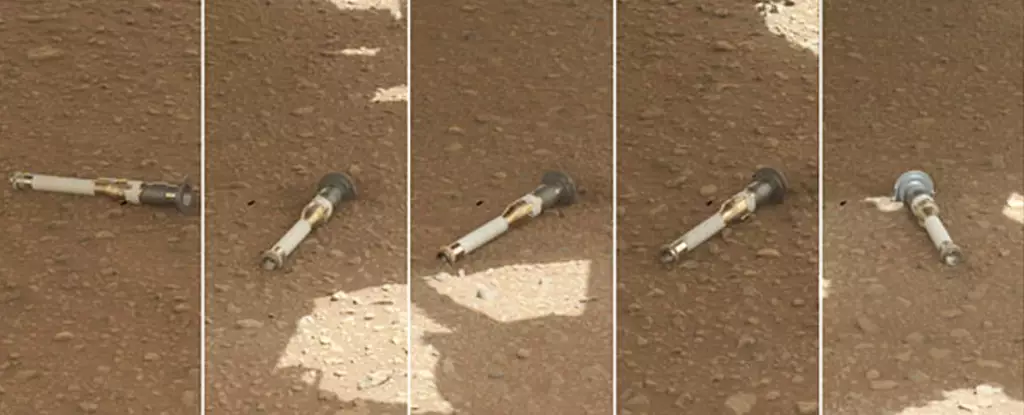NASA embarked on an ambitious mission to Mars with the Perseverance rover, aiming to collect samples from the red planet for analysis. The US$2.4 billion mission landed the rover in Jezero Crater, a site believed to be rich in ancient geological formations that could hold clues to the existence of past life on Mars. Perseverance has successfully gathered 24 samples, but now faces a logistical challenge in bringing these samples back to Earth for further study.
NASA’s original plan for the Mars Sample Return mission involved launching two rockets towards Mars, one carrying a lander and the other an orbiter. The lander would deploy a rover to retrieve the samples collected by Perseverance and load them onto a rocket attached to the lander. The orbiter would then collect the samples and journey back to Earth, releasing the samples for retrieval. However, the complexity and cost of this plan have proven to be astronomical, with projections indicating a budget of $8 to $11 billion and a timeline extended to 2040 for sample return.
Recognizing the challenges associated with the original Mars Sample Return plan, NASA is now seeking innovative proposals from companies and laboratories to come up with a more feasible solution. The agency is looking for out-of-the-box ideas that can bring the samples back to Earth earlier and at a lower cost. The goal is to explore new design possibilities and leave no stone unturned in finding a more efficient retrieval method for the samples collected by Perseverance.
In order to expedite the process, NASA is calling on both internal and external stakeholders to contribute to the development of a new plan for Mars Sample Return. The agency has set a deadline for receiving short proposals from interested parties, with plans to select a few competitors to further refine their ideas over a 90-day period. Established contractors like Lockheed Martin, Northrop Grumman, Boeing, and SpaceX, as well as emerging startups in the space industry, are invited to participate in this collaborative effort to find a more viable solution for bringing samples from Mars to Earth.
One of the most significant challenges in the Mars Sample Return mission is the return trip from Mars to Earth itself. Launching a spacecraft from another planet is an unprecedented task that requires cutting-edge technology and innovative engineering solutions. NASA acknowledges that this part of the mission will be a technological leap, pushing the boundaries of what has been achieved in space exploration so far. Despite the challenges, NASA remains committed to overcoming these obstacles in order to unlock the mysteries of Mars and pave the way for future human exploration of the red planet.


Leave a Reply